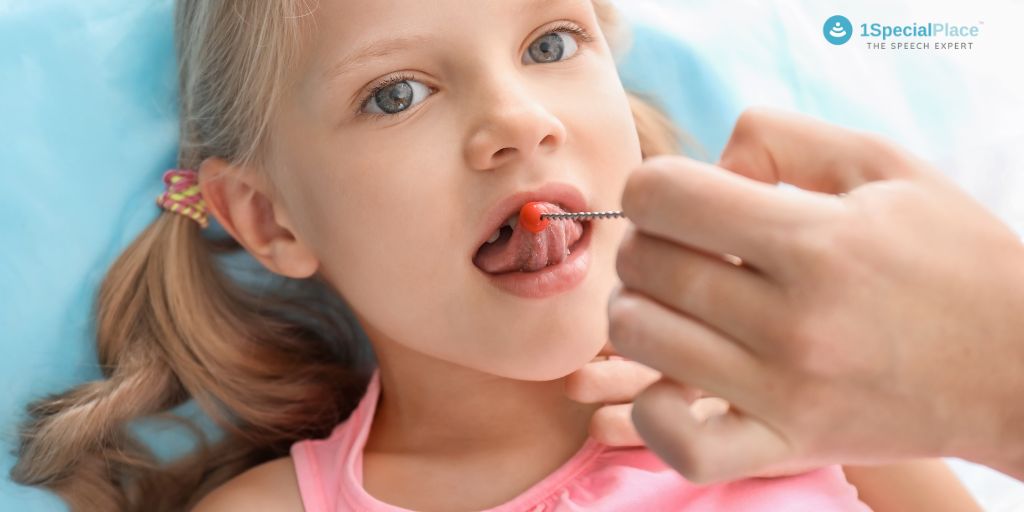
35 Awesome Speech Therapy Strategies
35 Awesome Speech Therapy Strategies
There are many ways in which you can help a child talk better. Here is a list of popular speech therapy strategies used by Speech Language Therapists. These can be helpful for professionals and parents alike. Therapy is not just about improving Speech, it also includes language therapy. Many have a misconception that Speech Therapy is just about teaching Speech, but it is more than that. It improves overall communication, enhances social skills, to cope up better with society, and helps in functioning day-to-day activities.
Speech Therapy in India is required to understand the meaning of words/ sentences, express needs, thoughts and ideas in an appropriate way, for developing conversational skills, self regulation, social appropriateness, better articulation and so on. This can lead to a diagnosis and thereafter writing a plan of intervention. Speech therapists will communicate and counsel family members of the client as well as the client about assessment results, and the course of action to be taken.
When do you need to see a speech and language therapist?
Parents need to educate themselves about both speech and language development and keep an eye on signs of an issue, particularly during their child’s first few years. Every child learns at their own pace but few observations in the day to day life can help you known if the speech and language development is happening appropriately:
Intervention is provided to the client or a primary caregiver (when children are very young, or an individuals’ need to aid of a family member on a regular basis such as those with developmental delays). On the contrary, speaking is just a part of the vast domain of speech therapy. Other aspects involve language, using pictures, gestures, building understanding, improving voice, fluency, retrieving information from the past and overall communication.There are many benefits of Speech therapy and here is a list of the different conditions that benefit from Speech Therapy.
1. Simplify : Use short phrases and sentences.
2. Add 1 word : Use 1 more word than what the child is using.
3. Imitation : Teach kids to copy you
4. Give 2 choices : What do you want? _____ or _____
5. Self Talk : Talk out loud about what you’re doing
6. Parallel Talk: Talk out loud about what the child is doing
7. Repetition : Repeat words again and again
8. Opportunities : Increase opportunities to use the new words many times in a day
9. Model : Tell the child what you want them to say
10. Use Visuals : Show objects or pictures when talking
11. One at a Time : Give only one of what the ask. E.g – Give one cookie, blow only one bubble, so that the child asks for more!
Read more about speech therapy activity
12. Sabotage : Set up the activity in a way that the child needs your help. E.g Give a plate but don’t give food to eat.
13. Out of Reach : Keep things that the child wants out of his reach, so that he has to ask for it. E.g – Keep the toy on the top of a cupboard
14. Be Forgetful : Pretend to forget where things are kept or what’s the next step and allow the child to speak up.
15. Don’t Anticipate : Don’t anticipate what your child wants the next minute. E.g – Let him ask for food when he feels hungry.
16. Be Silly : Do unexpected actions and gather the child’s attention. E.g – While playing with a ball, call it a pillow and allow the child to correct you.
17. Follow the lead : Talk about the child’s interest and follow his lead.
18. What’s New? : Try something new which you haven’t done with the child before. It could be a new craft, a new sensory activity or even a new song
19. Verbal Routine : Use same words in your interaction with the child. More here.
E.g- Start every activity with 1,2,3 ….
20. Sing : Use songs and music in your activities with the child.
21. Wait : Give wait time for the child to respond
22. Listen : Listen to what the child has to say. Let him finish his sentence.
Watch a video on Activity for speech therapy
23. Imaginary Talking Box : Whenever you interact with the child imagine that you both are inside a box, in a way that you should be able to a) touch the child b) maintain eye contact with him
24. Make Comments : Resort to commenting that bombarding the child with questions.
25. Say it Back : Repeat back with a stress on the correct target word. E.g If the child says , I want to eat ‘tootie’, repeat and say Yes you want to eat “COOKIE” ( stress on cookie)
26. Pacing Board : Tap or clap to add more words
27. Raise It : Raise the object you are talking about near your face. This will allow the child to maintain better eye contact and also look at how the word is pronounced in the mouth.
28. Finger+Thumb : Use this strategy to visually prompt the child to make a sentence. Each word corresponds to the finger+thumb tap
29. Temptations : Set up an environment conducive to learning. Have books, toys and items of the child’s interest around. These will tempt him to communicate with you.
30. Highlight : It’s important to use your voice effectively. Acoustically highlight it at the right time to gather the child’s attention and model good speech.
31. Gestures : Use gestures and sign language while talking with the child.
32. Expand : Expand language when talking to your child. Describe more about what you or the child is doing.
33. Open Ended Questions : Try open ended Wh questions. ( What, Why, Where, When and Who)
34. Small Steps : Take small steps in moving towards your communication goals.
35. Break it down : Break down longer activities into shorter achievable tasks. E.g – Instead of expecting the child to say all words clearly, focus only on saying all words with P clearly.
Leave us a reply to learn more! Subscribe here.
Take our online consultation from the convenience of your home and help your loved ones
We’ll collaborate with you to create your own specialized strategy and uncover your most effective communication. Both children and adults can benefit from speech therapy. If a kid shows any of these signs related to speech and language issues, it’s best to seek help as soon as possible.
Speech Therapy at the 1SpecialPlace
Our personalized Online speech therapy works for people of all ages and ailments, and it’s also convenient and fun. In fact, our customers tell us that they don’t feel like they’re doing “therapy work” throughout their sessions. Speech is how you express yourself; it’s what we hear. Language is not only what you wish to convey; it is also what we believe. When you have excellent speech and language, you can fully express yourself and connect with people.
Your child will work with our therapist during Speech Therapy Online. Some children’s speech improves with age, while others continues into adulthood. While a kid with a language problem could pronounce everything correctly but have trouble forming sentences to express ideas. In this case, the youngster will require ongoing speech therapy for the rest of his or her life.
Happy learning!
Feel free to contact us if you are still facing challenges in understanding your kid’s speech and language difficulties.
- Addressing the Silent Struggle in Special Needs Children - December 22, 2023
- Swallowing Difficulties: A Comprehensive Guide - December 12, 2023
- 6 Simple Steps to Enhance Speech Clarity and Connect with Confidence - November 3, 2023





Leave a Comment
(0 Comments)